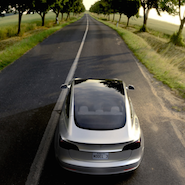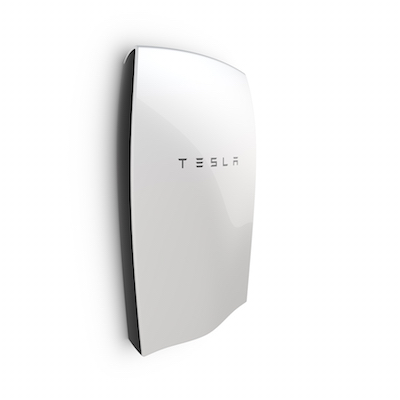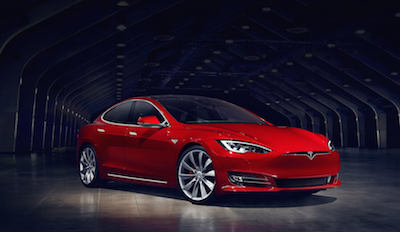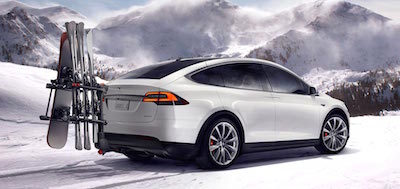U.S. electric automaker Tesla Motors has unveiled the second part of its master plan.
The acquisition of SolarCity (see story) marked the completion of part one, which also included the creation and distribution of three vehicles, culminating with an affordable, high-volume car, the Model 3. The new plan includes more vehicles and a big rig to better address the consumer market, autonomous vehicles and an ambitious entry into the world of public transportation.
“Although Tesla’s financials as of late, in terms of showing a profit, haven’t been the best, they have done a remarkable job considering the difficulty in an auto manufacturer startup,” said Brett Levine, cofounder of Drive Anything, Huntingdon Valley, PA.
“Because of their success in bringing new technology and competition to the other major automakers, they have permanently change the landscape, I believe,” he said. “There is no reason to doubt their claims, though they may be very ambitious.”
Master plan
The acquisition of SolarCity on June 21 was met with skepticism among the press and shareholders. The new plan, disclosed by founder Elon Musk on Tesla’s Web site, refocuses the brand’s commitment to the automotive sector rather than to alternative energy more broadly.
While Tesla’s stock dropped on July 21, the morning after Mr. Musk announced his plans, the fall was less dramatic than last month’s, which the brand quickly recouped.
The post included a brief section on solar power, calling for a “smoothly integrated and beautiful solar-roof-with-battery product that just works, empowering the individual as their own utility, and then scale that throughout the world.”
Tesla plans to expand its vehicle fleet to include a compact and “a new kind of pickup truck.” With the new vehicles, the Model S, lower-priced Model 3 sedan and full-size Model X SUV, the brand will be able to appeal to most of the consumer market.
Mr. Musk also backpedaled on his previous claim that he wants to make a model even cheaper than the Model 3. He now says that such a vehicle is “unlikely to be necessary,” owing to an ambitious sharing plan.
The sharing plan depends on full autonomy. Once achieved and approved for everyday use, the owner will be able to summon her vehicle from elsewhere.
As a result, Tesla intends to create a shared fleet of customer-owned vehicles, supplemented by its own to meet demand. Vehicles in the fleet, when not being used, will chauffeur other passengers, with the vehicle’s owner making money from the transaction, thereby offsetting the cost of the vehicle and making the Model 3 accessible for everyone.
The sharing plan puts Tesla in direct competition with services such as Uber and Lyft, who have not unveiled plans for operations in an autonomous era.
Tesla is also moving into more commercial aspects of the industry, detailing plans for both a Tesla Semi, or freight truck, and a passenger bus. The Semi aims to greatly reduce the cost of transporting cargo, at least in part through electric powertrains that also protect the environment.
Mr. Musk envisions autonomous buses operated by “fleet managers” rather than bus drivers, which can be hailed from phones or via summon buttons at existing bus stops. These buses will take passengers all the way to their destination, with fleet managers and connected- and autonomous-technologies ensuring efficient routes.
Like the first incarnation, the plan is a broad outline rather than a detailed strategy, without clear timelines or dollar figures. The exception is a paragraph on the advancement of the production factory, calling for “a five to 10 fold improvement” every two years. Under this timeline, Tesla will be scaling to millions of vehicles by the early 2020s if demand allows.
Additionally, Mr. Musk forecasts that 6 billion miles of autonomous driving will be necessary for worldwide regulatory approval. Assuming the current rate of 3 million miles per day is maintained – and as Tesla scales production, it will likely increase – it would take five-and-a-half years to reach the milestone.
Lastly, the recent autopilot fatality (see story) was indirectly addressed.
The accident occurred after more than 130 million miles of safe autopilot driving, compared to the rate of one fatality per 89 million miles for manual driving, making it around 1.5 times as safe. When Tesla’s autonomy is 10 times as safe as manual driving, it will remove the “beta” label from autopilot.
“On the whole, I believe there are a lot of good things that have come from Tesla, in what they’ve been able to accomplish and also not accomplish as a manufacturer,” Mr. Levine said. “It was time for some changes in the car industry as whole, whether some view them as good or bad, and time to move in a new direction.”
New world auto
The lack of financial disclosure and more specific timelines is once again the cause of skepticism. As a publicly held company, Tesla is constantly under pressure to turn a profit, which it has yet to prove it can do, and its plan to generate revenue in new markets suggests it prioritizes growth over profit.
While the tech world can sometimes sustain such models if revenue and venture capital is high enough, with Amazon being the primary example, Tesla has also missed production targets recently, casting doubt on at least a portion of the plan.
Furthermore, while the technology for autonomous vehicles appears to be growing quickly, regulatory approval is still mostly a guessing game. Taken together, these are the cause of some concern, particularly in the fickle automobile industry.
Nevertheless, Tesla’s unlikely, often doubted history of success to this point, as well as the utilitarian promises of its plans, could attract the talent and funding necessary to make it happen.
While Tesla is the most audacious with its future planning, other luxury automakers are also predicting a similar state for the future of the industry and taking comparable actions.
For example, German automaker Mercedes-Benz is addressing urbanization and environmentalism with the Mercedes-Benz Future Bus.
As cities bear the brunt of worldwide population growth and the effects of global warming are gradually felt, public transport is a necessity. Focusing on the public transit market as the market poises for growth will keep revenue high while also allowing the brand to show off technology and position itself as a leader (see story).
German automaker BMW is also extending its commitment to mobility with the new ReachNow brand.
ReachNow, launched in Seattle on April 12, is the American counterpart to the growing European “DriveNow” brand (see story), offering on-demand mobility to metropolitan dwellers. Supplementing its traditional model with a move into the mobility sector will help BMW remain a major player in the automotive industry among a larger group of consumers (see story).
“I think they have introduced a completely new model, and frankly the future of doing business in a lot of areas,” Mr. Levine said. “It has caused a lot of folks at different brands to really rethink how they run things.
“I believe that is a good thing,” he said. “As far as looking to other avenues such as public transportation or other markets to compete, with the advent of ridesharing, which is becoming a larger and larger marketshare, I think every option has to be looked at.”
from
http://redirect.viglink.com?u=http%3A%2F%2Fredirect.viglink.com%2F%3Fu%3Dhttps%253A%252F%252Fwww.luxurydaily.com%252Ftesla-outlines-new-vehicles-autonomy-sharing-public-transportation%252F%26key%3Dddaed8f51db7bb1330a6f6de768a69b8&key=ddaed8f51db7bb1330a6f6de768a69b8




No comments:
Post a Comment